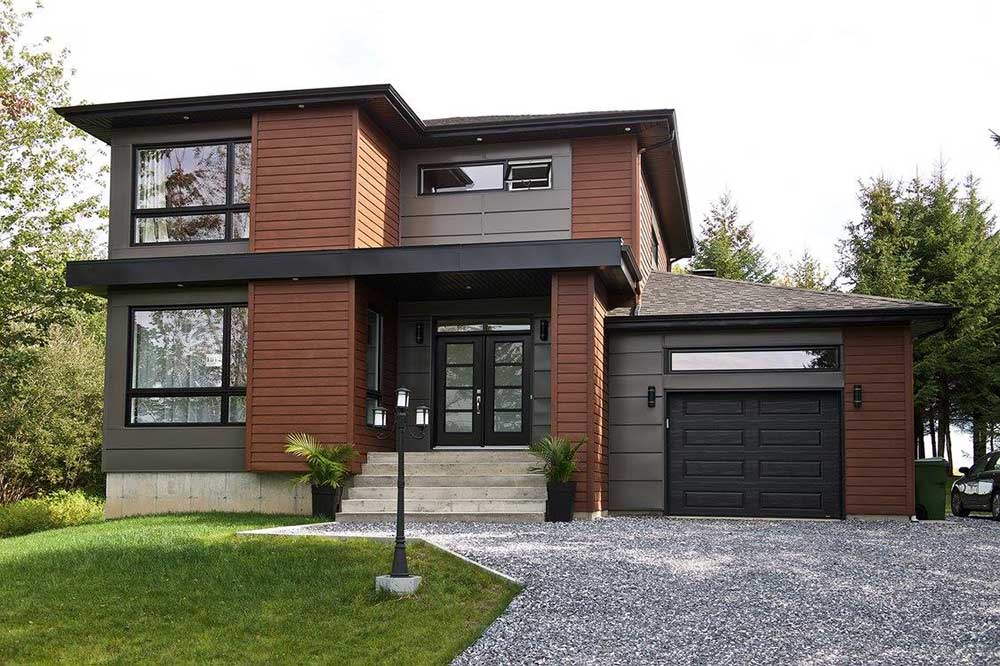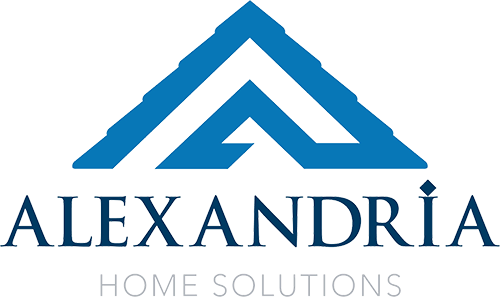
Key Takeaways
Michigan winters expose every weakness in your home's thermal envelope. While your neighbors prepare for holiday gatherings, your heating system battles subzero temperatures—and loses the fight through hidden air leaks, inadequate insulation, and inefficient HVAC performance. Each degree of heat escaping through windows, doors, and attics translates directly to higher utility bills and uncomfortable living spaces.
This winter energy audit checklist equips Michigan homeowners with specific benchmarks—U-factors, R-values, and CFM standards—to identify and eliminate heat loss before December's deep freeze.
A winter energy audit reveals hidden inefficiencies that standard home inspections miss. Michigan's extreme temperature swings—from below zero to moderate days—stress your home's thermal barriers differently than steady cold. Identifying these issues early prevents expensive emergency repairs and optimizes heating system performance.
A comprehensive energy audit quantifies heat loss through air leakage testing and thermal imaging. Professional audits measure air changes per hour and identify thermal bridging that visual inspections cannot detect. This data-driven approach prioritizes repairs by ROI, ensuring you address the most cost-effective improvements first.
The audit establishes a baseline for measuring improvement. Blower door tests quantify total air leakage in cubic feet per minute (cfm), while thermal cameras map surface temperatures to reveal insulation gaps. This documentation proves valuable for insurance discounts, resale value, and tracking energy consumption trends over multiple winters.
Pre-winter detection allows scheduled repairs during contractor availability. November and December bring contractor backlogs and premium emergency rates. Early identification enables competitive bidding and proper material sourcing before supply constraints. Build this into your pre-winter home prep plan so repairs are finished before contractor backlogs hit.
Addressing heat loss before peak heating season prevents compounding damage. Ice dams form when escaping heat melts roof snow, causing water infiltration and structural damage. Frozen pipes result from inadequate insulation in exterior walls and crawl spaces. Both issues escalate repair costs exponentially when caught mid-winter.
Your home loses heat through six primary pathways: windows, doors, attics, basements, walls, and HVAC systems. Each area requires specific inspection techniques and benchmarks. Focus on measurable standards—U-factors, R-values, and air leakage rates—rather than subjective assessments.
Windows and doors account for 25-30% of residential heat loss when they fail to meet Michigan's recommended performance standards. The Michigan Building Code 2021 establishes clear thresholds, while NFRC ratings provide standardized metrics for comparison.
Attics represent the largest single source of heat loss in Michigan homes. Heat rises naturally, and inadequate attic insulation allows 15-25% of your heating energy to escape directly through the roof. Proper inspection identifies both insulation deficiencies and air leakage paths that bypass insulation entirely.
| Heat Loss Issue | Impact on Energy Efficiency | Signs to Look For | Recommended Action |
| Insufficient insulation (below R-value recommendations) | 15-25% energy loss through ceiling | Uneven ceiling temperatures, ice dams, cold rooms | Upgrade to R-49 to R-60 for Michigan |
| Poor roof ventilation | Moisture reducing insulation effectiveness, compromising R-values by 2.0-5.0 points | Condensation, mold, ice dams | Install proper ridge and soffit venting |
| Air leaks around vents and skylights | Direct heat escape bypassing insulation | Visible drafts, light penetration, frost accumulation | Seal with caulking and weatherstripping |
| Missing or damaged insulation barriers | Thermal bridging through structural members | Cold ceiling spots, higher bills, uneven temperatures | Install continuous insulation layer |
Basements and foundations create direct thermal pathways to frozen ground. Concrete conducts heat efficiently, and uninsulated basement walls lose heat continuously throughout winter. This constant heat drain forces your HVAC system to run longer cycles, increasing both energy costs and equipment wear.
Wall cavities hide insulation failures and air infiltration paths that manifest as uncomfortable drafts and cold spots. These issues reduce effective R-values by 2.0-5.0 points even when nominal insulation exists. Air movement through wall cavities carries moisture, potentially causing condensation and mold growth inside wall assemblies.
Insulation failures manifest through observable symptoms and measurable performance degradation. Modern diagnostic tools quantify these losses, but homeowners can identify obvious issues through systematic observation. Understanding both qualitative indicators and quantitative measurements enables informed decision-making about professional assessment needs.
Poor insulation creates observable patterns throughout your home. These symptoms indicate heat loss rates 15-25% above those of properly insulated comparable homes. Early recognition prevents escalating energy costs and potential structural damage from moisture accumulation.
Thermal imaging reveals temperature differentials invisible to standard inspection. These cameras detect subtle variations indicating air leakage, missing insulation, and thermal bridging. Professional-grade thermal cameras provide quantifiable data that prioritizes repair investments by severity.
| Inspection Method | Speed | Accuracy | Cost | Best For |
| Thermal Camera | Fast (2-3 hours whole home) | High - identifies hidden gaps | $200-500 rental, $2,000+ purchase | Comprehensive whole-home assessment |
| Visual Inspection | Slow (multiple days) | Low - only obvious issues | Free | Quick surface-level checks |
| Blower Door Test | Moderate (3-4 hours) | Very High - quantifies leakage in cfm | $300-500 professional | Measuring total air leakage |
| Smoke Pencil | Slow (point-by-point) | Moderate - specific locations | $10-30 | Pinpointing specific leaks |
DIY inspection identifies obvious issues and establishes whether professional assessment is warranted. Homeowners can check accessible attics, basements, and visible wall cavities. However, a comprehensive evaluation requires specialized equipment and expertise to quantify problems and prioritize solutions.
DIY Inspection:
Professional Inspection:
Air leakage accounts for 25-40% of heating energy loss. Heated air escapes through gaps while cold air infiltrates, forcing HVAC systems into continuous operation. The 0.3 cfm standard establishes maximum acceptable leakage rates.
| Ice Dam Factor | Impact on Home | Energy Loss Effect | Prevention Method |
| Inadequate attic insulation | Heat escapes melting snow which refreezes at eaves | Direct 15-25% heating energy loss | Increase insulation to R-49 to R-60 |
| Poor attic ventilation | Uneven roof temperatures | Reduced insulation effectiveness | Install proper ridge and soffit vents |
| Air leaks into attic | Warm moist air compromises insulation | Decreased R-value by 2.0-5.0 points | Seal all penetrations before insulating |
| Water intrusion | Damaged insulation, structural rot | Further R-value reduction | Address root cause through insulation/ventilation |
When air sealing Michigan homes, combine perimeter weatherstripping with interior/exterior caulking to hit ≤0.3 cfm.
| Sealing Method | Ease of Installation | Cost | Effectiveness | Lifespan | Best Application |
| Weatherstripping | Easy (DIY 1-2 hours) | $5-20 per unit | High - reduces to ≤0.3 cfm | 3-5 years | Moving parts, doors, operable windows |
| Caulking | Moderate (DIY 30-60 min) | $10-30 per window | Very high - permanent air seal | 5-10 years exterior, 10-20 interior | Fixed joints, stationary gaps |
| Expanding foam | Easy to moderate | $5-15 per can (20-30 sq ft) | Excellent for large gaps | 20+ years protected | Rim joists, large penetrations |
| Door sweeps | Very easy (15 minutes) | $10-25 per door | High for bottom gaps | 2-4 years | Exterior door bottoms, garage doors |
| Material | R-Value/Inch | Cost/Sq Ft | Durability (Years) | Installation | Best Application |
| Fiberglass Batt | R-3.1 to R-3.4 | $0.50-$1.50 | 50-100 | DIY-friendly | Standard wall cavities, accessible attics |
| Blown-in Cellulose | R-3.2 to R-3.8 | $1.00-$2.00 | 20-30 (settles) | Professional equipment | Attic floors, retrofitting walls |
| Closed-Cell Spray Foam | R-6.0 to R-7.0 | $3.00-$5.00 | 50+ | Professional only | Rim joists, basements, maximum R-value |
| Open-Cell Spray Foam | R-3.5 to R-3.6 | $1.50-$2.50 | 50+ | Professional only | Interior walls, sound dampening |
| Rigid Foam Board | R-4.0 to R-6.5 | $2.00-$4.00 | 50-100 protected | DIY or professional | Basement walls, exterior continuous |
| Type | Cost | Installation Ease | R-Value Performance | Air Sealing | Best Michigan Use |
| Blown-in | Moderate ($1-2/sq ft) | Professional required, 1-2 days | Good (R-3.2-3.8/inch), settles over time | Moderate, doesn't create air barrier | Attic floors, retrofitting existing walls |
| Batt | Low ($0.50-1.50/sq ft) | Easy DIY, weekend project | Good (R-3.1-3.4/inch), gaps reduce effectiveness | Poor - requires separate air sealing | New construction, accessible cavities, budget projects |
| Spray Foam | High ($1.50-5/sq ft) | Professional only, 1-3 days | Excellent (R-3.5-7.0/inch), no settling | Excellent - achieves ≤0.3 cfm | Maximum efficiency, rim joists, moisture-prone basements |
Use the following home energy audit checklist to score each area and decide what to fix first.
| Audit Step | What to Check | Tools Needed | Pass/Fail Criteria | Action if Failed |
| Windows/Doors | Air leakage, U-factor, weatherstripping | Smoke pencil, infrared thermometer | Air leakage ≤0.3 cfm, U-factor ≤0.30 | Add weatherstripping, caulk, consider replacement |
| Insulation | R-values in attic, walls, basement | Flashlight, ruler, depth gauge | Attic R-49-60, walls R-13-21, basement R-10 | Add insulation to achieve required R-values |
| HVAC Performance | Filter, duct leaks, thermostat | Visual inspection, thermometer | Clean filter, no gaps, consistent temps | Replace filter, seal ducts, recalibrate |
| Basement | Wall insulation, foundation, windows | Flashlight, infrared thermometer | R-10 minimum, no cracks, no drafts | Insulate walls, seal cracks, replace windows |
| Attic | Ventilation, insulation depth, air leaks | Flashlight, ruler, smoke pencil | Proper airflow, even depth, no light | Increase insulation, improve venting, seal gaps |
| Monitoring Method | Accuracy | Initial Cost | Ongoing Cost | Ease of Use | Best For |
| Smart Thermostats | High | $150-300 | None | Easy | Active energy management, 15-25% savings tracking |
| Utility Bill Analysis | Moderate | Free | None | Very Easy | Budget-conscious, baseline tracking |
| Energy Monitoring Apps | High | $50-200 hardware | $0-10/month | Moderate | Tech-savvy users wanting device-level detail |
| Thermal Camera Checks | Very High | $200-500 rental | Rental fees | Moderate | Targeted problem-solving, verification |
Start with <$200 DIY wins: replace HVAC filters, add door weatherstripping, and caulk window gaps. Schedule a professional energy audit before October and prioritize attic insulation to R-49–R-60—often recovering 15–25% of heating costs. Maintain momentum with monthly filter changes, quarterly insulation checks, and smart-thermostat tuning while tracking utility bills for drift. Fix small issues fast (a $30 weatherstripping tweak today can prevent ~$300 in waste by spring)—Michigan winters reward ongoing, not one-and-done, prep.
Ready to winterize your Michigan home and slash heating costs? Contact Alexandria Home Solutions today for a professional energy audit and custom solutions that deliver measurable savings all winter long.
